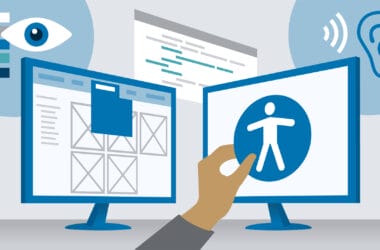Contents
Over the past few decades, educational technology has advanced rapidly. From Smart Boards to learning apps, educators have welcomed EdTech tools with open arms to amplify lessons and impact learning. Recently, a new platform has come to the forefront of education: ChatGPT. While ChatGPT proves to offer benefits in education, many are weary of the AI tool and unaware of its full capabilities. In this blog post, we will explore ChatGPT technology, its potential impact on the education sector, and how educators can embrace its emergence to improve their pedagogy.
What is Chat GPT?
ChatGPT is an AI tool that utilizes the language processing model. It interacts with individuals in a conversational manner and examines a large database of information to generate human-like responses to questions and prompts. It stands out from AI tools of the past due to its comprehensive ability to complete complex and lengthy tasks such as writing essays, creating scripts, planning lessons, and so much more. It can complete these tasks in seconds, offering a convenient and quick new way to generate cohesive information. You can explore the platform here:
What is the potential impact of ChatGPT on the education sector?
As previously mentioned, educational technology has long been used to enhance the educational experience and commonly makes learning more effective. Of course, there are learning curves to understanding a new EdTech tool. Once mastered and implemented effectively, they can save time, improve academic outcomes, and increase engagement in the classroom.
While ChatGPT may not technically be an EdTech tool, it lends itself as one in many ways due to its vast capabilities and flexible usage. If educators invest their time into engaging with, learning about, and testing scenarios in ChatGPT, it can prove to be beneficial. Here are a few examples of potential ways ChatGPT can impact the educational sector.
Saving Educators Valuable Time
Educators are balancing increasingly heavy plates, making their jobs very time-consuming. From writing lesson plans, creating assessments, grading, organizing, analyzing data, communicating with parents, and managing professional development, it can be hard to make time to do it all. It is to the benefit of educators to find resources like ChatGPT that can assist in reducing the workload and simplifying tasks. Here are a few of the areas that the AI platform can impact:
- Creating Lesson Plans and Resources:
Lesson planning is a time-consuming, yet crucial component of education. ChatGPT can assist educators in the lesson planning process to ultimately save them time. It is important to note that ChatGPT, as any EdTech tool, should be used as a supplemental resource and that educators should always apply their own expertise to creating lessons. With that being said, ChatGPT can create entire lessons, activities, and lesson plan components when prompted. When typing the following prompt into ChatGPT:
“Create a 10-minute lesson plan for third graders on multiplying single digit numbers using the array model”
The AI tool was able to script an entire lesson plan sectioned into the following components: title, grade level, objectives, materials, introduction, instruction, guided practice, independent practice, conclusion, and assessment with time breakdowns for each component. The lesson plan was well thought out and formatted like a lesson plan most districts would provide. It is not recommended for educators to rely solely on these creations, but rather to use them as a starting point to spark creativity or gather ideas for their pedagogy. When implemented properly, this serves as a game changer and a huge time saver for educators.
- Providing Remedial Actions for Struggling Students:
Lesson planning is a complex task as many classrooms consist of students at varying levels. In addition to basic lesson plans, educators must be prepared to scaffold students and meet their varying needs. This can be a time-consuming task for educators, and it can be challenging to know how to break an assignment into multiple levels. ChatGPT can help in this area. In response to the same prompt and lesson plan mentioned above, I followed up by asking:
“How could I scaffold this lesson plan for struggling students as well as advanced students?”
ChatGPT responded with two sections: “Scaffolding for Struggling Students” & “Scaffolding for Advanced Students”. Each section contained four unique ideas. For struggling students, it recommended ideas such as using manipulatives, starting with an easier problem, or pairing the student with a partner. For advanced students, it recommended ideas such as increasing the rigor of the problem, providing additional practice questions, and having students come up with their own multiplication problems to solve.
Suggestions such as these can come in handy when planning for lessons. Additionally, with the quick pace of ChatGPT, educators could also utilize this feature during a lesson if they did not anticipate the need to scaffold and are out of ideas. Again, these are suggestions and a starting point that educators should build on using their own expertise.
- Improving Turnaround Time for Assignments:
Another time-consuming role of educators is grading papers and assignments. Grading can be complex and requires detailed attention and personalization. Multiply this by dozens or hundreds of student assignments and it becomes an overwhelming amount of work. However, it is crucial to have a fast turnaround time as an educator because timely feedback increases the value and engagement that grading has on students. The quicker the turnaround time, the more effective the feedback will be. Here are a few ways ChatGPT can assist educators with grading.- Automated Feedback: ChatGPT can provide automated feedback on things like spelling, grammar, multiple-choice questions, and fixed math problems. This can save educators time on grading assignments that require less critical thinking.
- Natural Language Processing: For more complex assignments such as essays and extended responses, educators can have ChatGPT read submissions to identify key concepts, patterns, and themes. This can give educators a starting point when diving into assignments.
- Creating Rubrics for Grading: ChatGPT can assist in the creation of grading criteria as well. If you give ChatGPT a detailed explanation of a learning objective and assignment it can create a rubric organized by criteria, points, and descriptions. Again, it is important that educators always customize and refine what they receive, but it is a time-saving starting point and an invaluable resource.
- Increasing Assessment Accuracy: An added benefit to using the features above is increased consistency and accuracy when grading. Utilizing language processing software and rubric systems can streamline the grading process for educators through even the most complex assignments. Automated feedback lends itself to bulk grading with accurate results. This ultimately saves teachers time and eliminates the need to double-check answers.
- Increasing Student Engagement:
EdTech tools have a strong track record of increasing student engagement. ChatGPT can be offered to students when appropriate as a supplemental learning tool. For example, it can be used by the student to ask questions when their teacher may not be immediately available. Having a quick response from ChatGPT will free up time for both students and teachers, redirecting focus to the work at hand. It can also personalize the learning experience as follow-up questions may arise, ChatGPT will be able to formulate answers that directly align with the student’s needs.
- Additionally, educators can use ChatGPT to generate open-ended questions and problem-solving scenarios related to learning objectives that increase the need for higher-order thinking skills. When educators increase the level of questioning and problem-solving in their lessons, it will lead to higher levels of active thinking and engagement.
Embracing New Technology to Enhance Educational Quality
Considering the benefits mentioned above, educators may be wondering what the next steps are to begin integrating ChatGPT into their pedagogy. Here are some suggestions on how educators can embrace this new technology to expand their pedagogy.
- Staying Ahead of The Curve:
AI technologies are limited in their capabilities and can’t fully replace humans. However, as covered in this blog post, AI tools can offer many time-saving benefits that streamline and automate the education cycle. With ChatGPT, educators can work smarter, not harder. It can be put in the same category as familiar technology tools such as search engines, scantron graders, and grammar and spellchecks for word processing software. Educators who choose to embrace this new technology as a resource to enhance their pedagogy and increase their efficiency will surely see their efforts pay off. Additionally, the world will continue to modernize as technology moves forward; It is possible that software like ChatGPT will only grow more advanced. Educators who embrace it in its early stages will be able to grow with fluidity and embrace future changes rather than fall behind.
- Prepare Students for the Future:
It is not only the world of education advancing but rather the world as a whole. Technical proficiency is an expected skill in the modern workplace, and AI software is used in almost every industry to some extent. When you integrate cutting-edge technology such as ChatGPT in your lessons, you are preparing students for the real world. When students can familiarize themselves with technology, it helps them to develop 21st century skills that will prepare them for success in college, career, and beyond. Take small steps to introduce the technology until it is eventually a seamless part of your classroom routine.
- Remember Your Value:
Educators will always be some of the most valued and appreciated individuals in society. You, as an educator, are irreplicable. You are valuable, knowledgeable, and highly skilled. No technology will ever change that. Rather than fearing the impacts of modern technology, embrace it with open arms knowing that it can only make you stronger, more skilled, and more effective as an educator.
Summary
Overall, ChatGPT is not a threat to the world of education, but rather a useful and fully optional tool. For years, educators have adapted to changing times and learned how to implement the latest and greatest EdTech tools to optimize their classroom efficiency. ChatGPT offers the same promise to educators; a supplemental teaching tool that, when implemented properly, can yield extraordinary learning outcomes. Educators who embrace this technology reflect a modern, 21st classroom approach.
Interested in learning more about ChatGPT in the education sector? Stay tuned for part two of our ChatGPT blog series where we will discuss the impact and implications of ChatGPT on the assessment industry.





